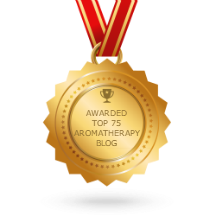We tend to separate our natural remedies from over the counter and prescription drugs. I had always known that Wintergreen essential oil can interact with blood thinning drugs but had no idea that other essential oils could interfere with other prescription medications. As time allows, I will be posting this information with each of the applicable essential oils on our website, but for now I want it available for any one who needs it.
There are three significant risks if essential oils are misused or used inappropriately. They are
- Allergic Reactions - which can usually be prevented by wise and appropriate use of appropriate dilutions, etc.
- Phototoxicity - which can be avoided by awareness of which oils are photosensitizers and avoiding topical use followed by exposure to ultraviolet light, and
- Drug interactions - as the populations use of Rx drugs increases, and, at the same time, use of essential oils increases, there are going to be cases of EO/drug interactions. There is little published information about these interactions.
The four most likely phytochemicals to interfere with medications are Citral, Methyl salicilate, and alpha-Bisabol/Chamazulene.
Citral: Oils high in citral include (but are not limited to) Lemongrass, May Chang (Litsea cubeba), Honey Myrtle, Lemon Myrtle, and Lemonscented Tea Tree. (Other oils also contain citral, but these oils are well over 50% Citral.) They may interfere with metabolism of Methadone (used in aiding in treatment for drug addiction), Propofol (used to induce general anesthesia) and Tamixofen (an estrogen blocker, used to treat breast cancer.)
Methyl Salicilate: The only oils high in Methyl Salicilate are Wintergreen and Sweet Birch. Methyl salicilate is a blood thinner and should never be used if the individual is taking Warfarin or other blood thinners.

Chamazulene and a-bisabolol: These soothing anti-inflammatory agents are found primarily in the"blue" oils...German Chamomile, Yarrow, Blue Tansy, and some of the artemesias. They can affect the metabolism of Codeine, Lidocaine, Amitriptiline (Elavil, an anti-depressant) Imipramine (a tricyclic antidepressant), Tamoxifen (an estrogen blocker, used to treat breast cancer), Fluoxetine (Prozac, an SSRI antidepressant), Fluvoxamine (another SSRI), and Paroxetine (Paxil, another SSRI.)
Gentle, soothing German Chamomile...who knew? Not me, that's for sure!
Now, what amount of these essential oils would "enough" to interfere with the associated medications? I don't know. But until more information is known it seems to me avoiding the combinations would be wise.
Yet another reason for anyone using essential oils whether professionally on clients/patients, or just on a friend or family member needs to have a full medical history.
"Anything powerful enough to heal is also powerful enough to do damage."
For the most complete and up to date information on the safe and appropriate use of these powerful healing oils, please see Essential Oil Safety, 2nd edition, by Robert Tisserand and Rodney Young.


1 comment:
What about clove and cinnamon? I've read that they also should not be used if your are on blood-thinners.
What oils can be substitutes for those two? I'm trying to make a homemade thieves for my dad but he is on warfarin...
Thanks
Post a Comment